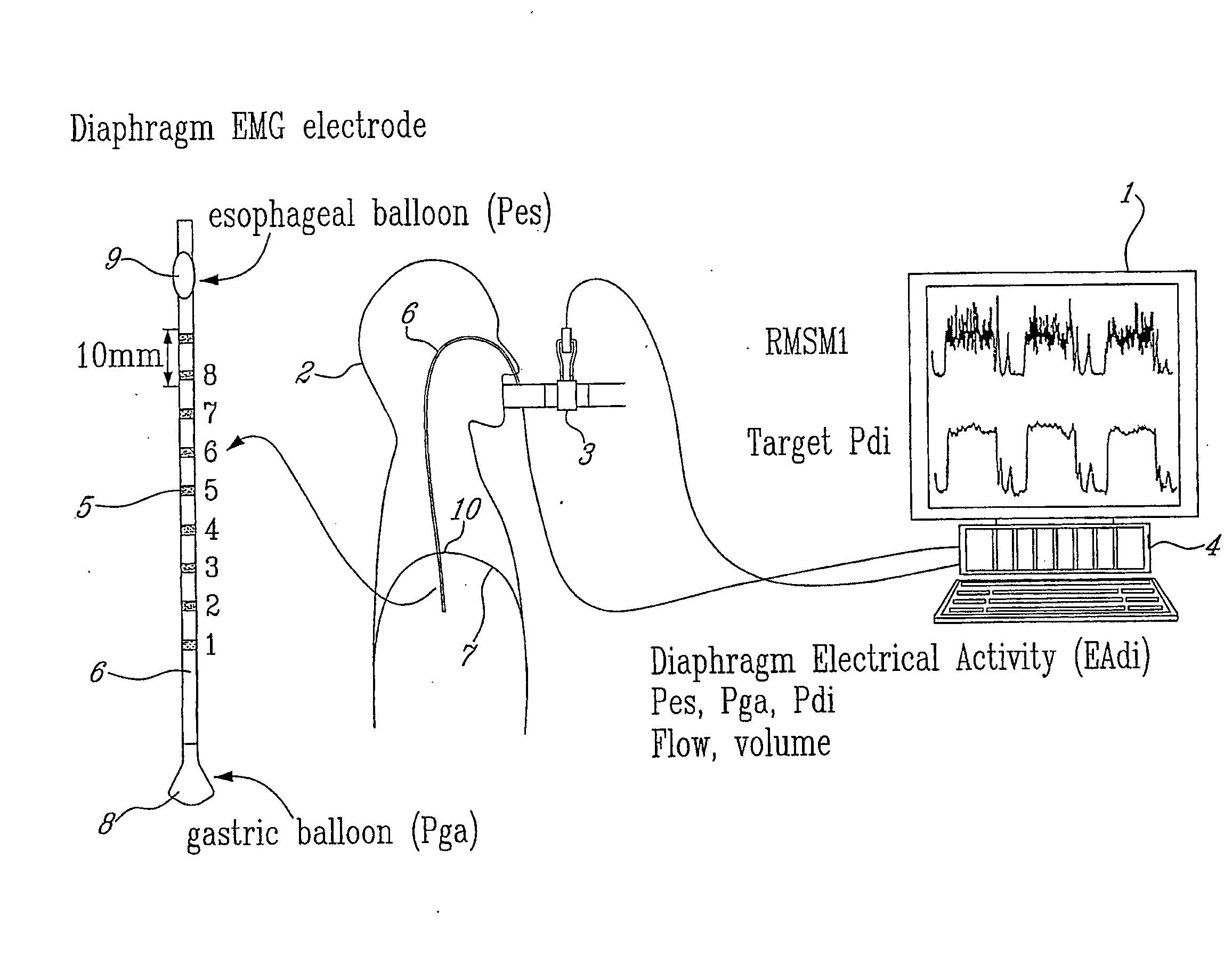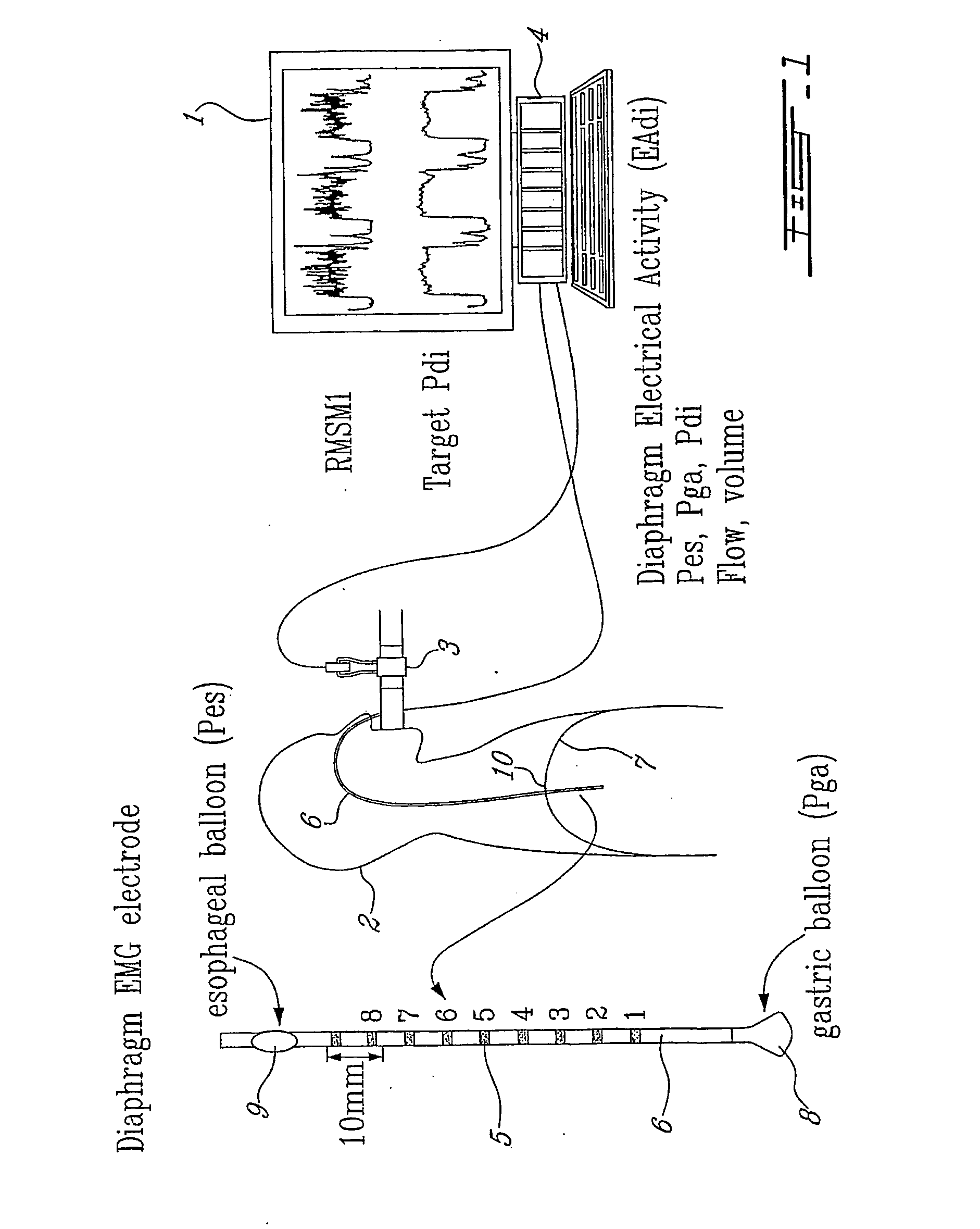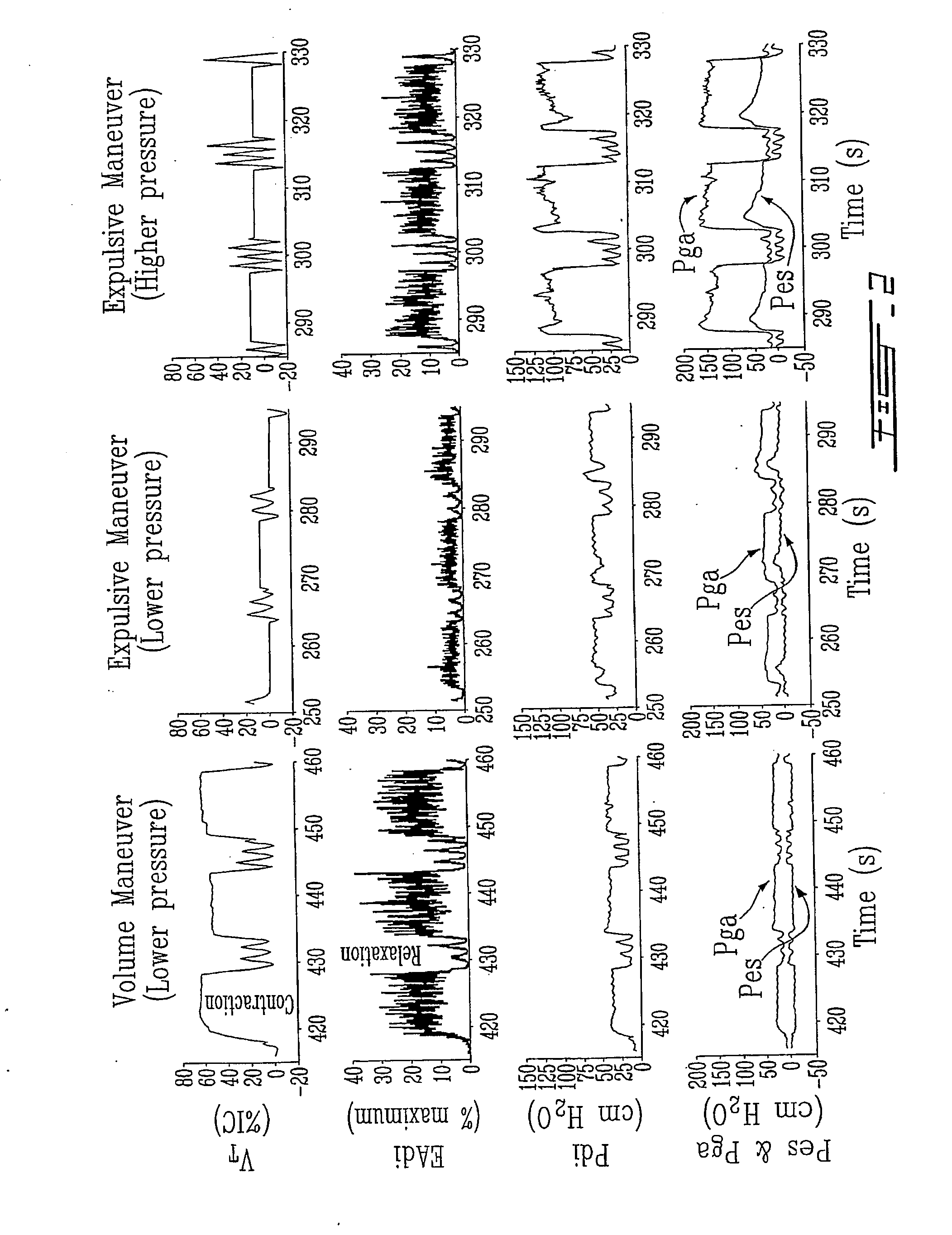Method and Device Using Myoelectrical Activity for Optimizing a Patient's Ventilatory Assist
a technology of ventilatory assist and myoelectric activity, which is applied in the field of myoelectric activity for optimizing the ventilatory assist of patients, can solve the problems of reducing the capacity of the respiratory muscles to generate pressure, affecting the length-tension relationship the total unloading of the respiratory muscles, so as to prevent the fatigue of the respiratory muscles of patients
- Summary
- Abstract
- Description
- Claims
- Application Information
AI Technical Summary
Benefits of technology
Problems solved by technology
Method used
Image
Examples
first embodiment
of FIG. 5
[0097]Operation 501
[0098]The signal strength of the diaphragm's electrical activity EAdi is monitored through a detector 502. As illustrated in FIG. 1, detector 502 may comprise, for example, a computer 4 to measure the signal strength of the electrical activity EAdi of the patient's diaphragm through a linear array 5 of electrodes mounted on an esophageal catheter 6 inserted through the patient's nostril (or patient's mouth) until the electrode array 5 is positioned in the gastro-esophageal junction 10 of the patient's diaphragm 7.
[0099]Operation 502
[0100]A calculator 503 calculates the coefficients α and β using equation (28):
αE−β−Q=0 (28)
with myoelectric data from fatigue tests (calibration). Fatigue test can be performed by either reducing the level of assist, or performing a short airway occlusion, while measuring the myoelectric activity during a few inspiratory attempts. To shorten and facilitate the fatigue test the subject could be encouraged to voluntarily increa...
second embodiment
of FIG. 6
[0112]Operation 601
[0113]The signal strength of the diaphragm's electrical activity EAdi is monitored through a detector 602. As illustrated in FIG. 1, detector 602 may comprise, for example, a computer 4 to measure the signal strength of the electrical activity EAdi of the patient's diaphragm through a linear array 5 of electrodes mounted on an esophageal catheter 6 inserted through the patient's nostril (or patient's mouth) until the electrode array 5 is positioned in the gastro-esophageal junction 10 of the patient's diaphragm 7.
[0114]Operation 603
[0115]A detector 604 monitors the patient's transdiaphragmatic pressure Pdi. As illustrated in FIG. 1, detector 604 may comprise, for example, a computer 4 to continuously measure the transdiaphragmatic pressure Pdi by detecting the esophageal Pes and gastric Pga pressures through respective gastric 8 and esophageal 9 balloons mounted on the catheter 6 on opposite sides of the array 5 of electrodes, and by processing the detect...
PUM
 Login to View More
Login to View More Abstract
Description
Claims
Application Information
 Login to View More
Login to View More - R&D
- Intellectual Property
- Life Sciences
- Materials
- Tech Scout
- Unparalleled Data Quality
- Higher Quality Content
- 60% Fewer Hallucinations
Browse by: Latest US Patents, China's latest patents, Technical Efficacy Thesaurus, Application Domain, Technology Topic, Popular Technical Reports.
© 2025 PatSnap. All rights reserved.Legal|Privacy policy|Modern Slavery Act Transparency Statement|Sitemap|About US| Contact US: help@patsnap.com



